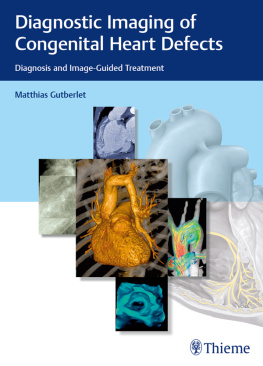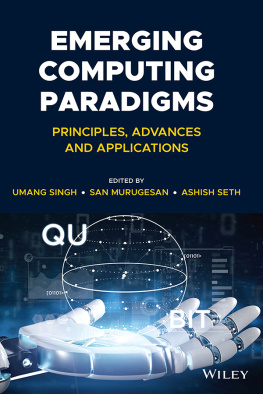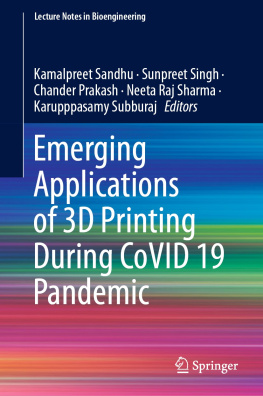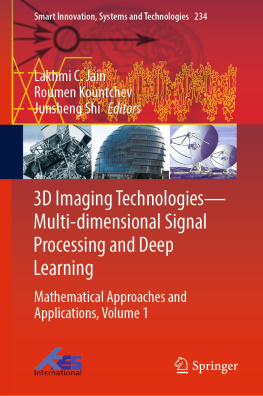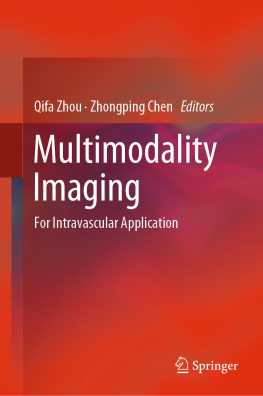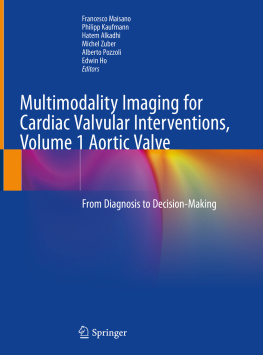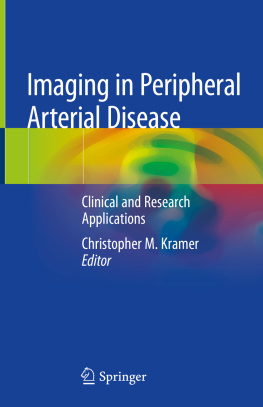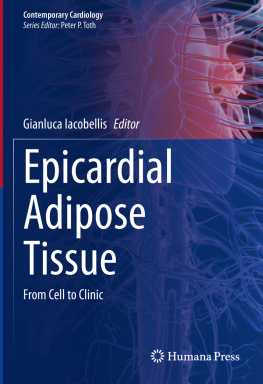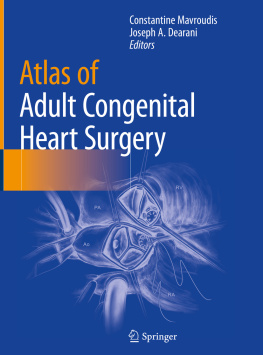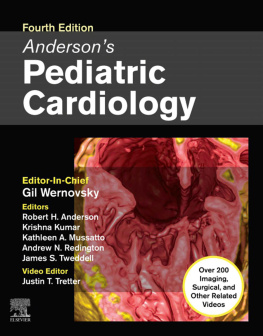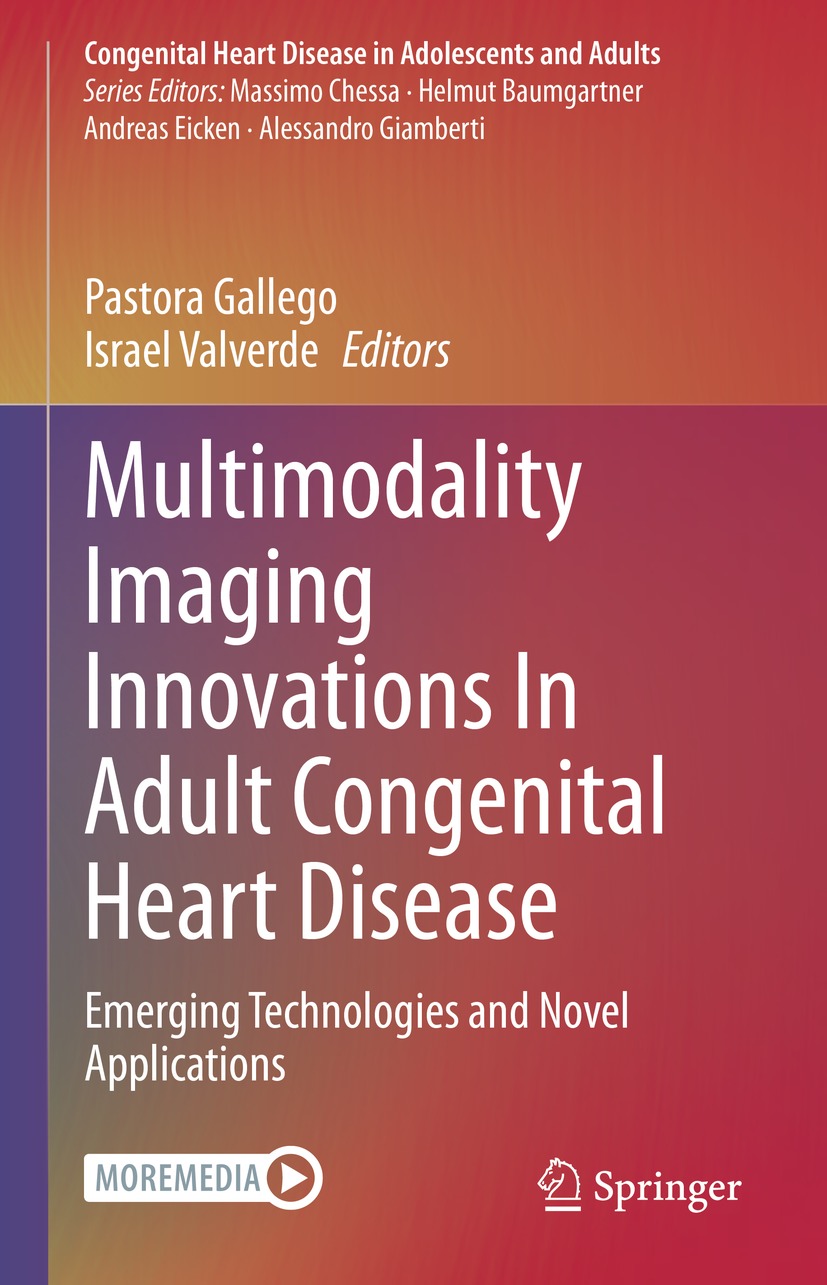Congenital Heart Disease in Adolescents and Adults
Series Editors
Massimo Chessa
San Donato Milanese, Italy
Helmut Baumgartner
Mnster, Germany
Andreas Eicken
Munich, Germany
Alessandro Giamberti
San Donato Milanese, Italy
Endorsed by
The ESC Working Group on Grown-up Congenital Heart Disease
AEPC Adult with Congenital Heart Disease Working Group
The aim of this series is to cast light on the most significant aspects whether still debated or already established of congenital heart disease in adolescents and adults and its management. Advances in the medical and surgical management of congenital heart disease have revolutionized the prognosis of infants and children with cardiac defects, so that an increasing number of patients, including those with complex problems, can reach adolescence and adult life. The profile of the adult population with congenital heart disease (ACHD) is consequently changing, and in future many adult patients will present different hemodynamic and cardiac problems from those currently seen. A cure is rarely achieved, and provision of optimal care is therefore dependent on ongoing surveillance and management in conjunction with experts in this highly specialized field. Specialists in ACHD management need to have a deep knowledge not only of congenital cardiac malformations and their treatment in infancy and childhood, but of general medicine, too. A training in adult cardiology, including coronary artery disease, is also essential. Similarly, surgeons need to acquire expertise and good training in both adult and pediatric cardiosurgery. Readers will find this series to be a rich source of information highly relevant to daily clinical practice.
More information about this series at http://www.springer.com/series/13454
Editors
Pastora Gallego and Israel Valverde
Multimodality Imaging Innovations In Adult Congenital Heart Disease
Emerging Technologies and Novel Applications
1st ed. 2021

Logo of the publisher
Editors
Pastora Gallego
Institute of Biomedicine of Seville, Virgen del Roco University Hospital, Seville, Spain
Israel Valverde
Pediatric Cardiology Unit, Virgen del Roco University Hospital, Institute of BioMedicine of Seville, Seville, Spain
ISSN 2364-6659 e-ISSN 2364-6667
Congenital Heart Disease in Adolescents and Adults
ISBN 978-3-030-61926-8 e-ISBN 978-3-030-61927-5
https://doi.org/10.1007/978-3-030-61927-5
Springer Nature Switzerland AG 2021
This work is subject to copyright. All rights are reserved by the Publisher, whether the whole or part of the material is concerned, specifically the rights of translation, reprinting, reuse of illustrations, recitation, broadcasting, reproduction on microfilms or in any other physical way, and transmission or information storage and retrieval, electronic adaptation, computer software, or by similar or dissimilar methodology now known or hereafter developed.
The use of general descriptive names, registered names, trademarks, service marks, etc. in this publication does not imply, even in the absence of a specific statement, that such names are exempt from the relevant protective laws and regulations and therefore free for general use.
The publisher, the authors and the editors are safe to assume that the advice and information in this book are believed to be true and accurate at the date of publication. Neither the publisher nor the authors or the editors give a warranty, expressed or implied, with respect to the material contained herein or for any errors or omissions that may have been made. The publisher remains neutral with regard to jurisdictional claims in published maps and institutional affiliations.
This Springer imprint is published by the registered company Springer Nature Switzerland AG
The registered company address is: Gewerbestrasse 11, 6330 Cham, Switzerland
Preface to the Series
In Europe, we are currently faced with an estimated ACHD population of 4.2 million; adults with congenital heart disease now outnumber children (approximately 2.3 million). The vast majority cannot be considered cured but rather having a chronic heart condition that requires further surveillance and timely re-intervention for residual or consequent anatomical and/or functional abnormalities. ACHD patients have very special needs, and the physicians taking care of them need expert training. Special health care organization and training programs for those involved in ACHD care are therefore required to meet the needs of this special population.
ACHD problems remain a small part of general cardiology training curricula around the world, and pediatric cardiologists are trained to manage children with CHD and may, out of necessity, continue to look after these patients when they outgrow pediatric age.
There are clearly other health issues concerning the adult with CHD, beyond the scope of pediatric medicine, that our patients now routinely face. Adult physicians with a non-CHD background are therefore increasingly involved in the day-to-day management of patients with CHD.
Experts in congenital heart disease should work to improve the health care system, so that teens and young adults have an easier time making the transition from receiving health care in pediatric cardiology centers to receiving care from specialists in adult cardiology.
The aim of this series is to cast light on the most significant aspects of congenital heart disease in adolescents and adults and its management, such as transition from pediatric to adulthood, pregnancy and contraception, sport and physical activities, pulmonary hypertension, burning issues related to surgery, interventional catheterization, electrophysiology, intensive care management, and heart failure.
This series wishes to attract the interest of cardiologists, anesthesiologists, cardiac surgeons, electrophysiologists, psychologists, GPs, undergraduate and postgraduate students, and residents, and would like to become relevant for courses of cardiology, pediatric cardiology, cardiothoracic surgery, and anesthesiology.
We thank both the wonderful groups of leading cardiovascular experts from around the world for donating their precious time, producing excellent textbooks, and making this book series a reality, and the members of the two Working Groups (ESC and AEPC ACHD/GUCH Working Group) for the invaluable suggestions and support without which this work would not be possible.
Massimo Chessa
Helmut Baumgartner
Andreas Eicken
Alessandro Giamberti
San Donato Milanese, Italy Mnster, Germany Munich, Germany San Donato Milanese, Italy
Preface
Innovations and emerging technologies for diagnosis, evaluation and treatment in congenital heart defects are continually evolving. Thanks to these advancements in non-invasive diagnosis there has been an improvement in the survival of patients born with a congenital heart disease and most of them are now reaching adulthood.
Novel approaches to transcatheter interventions and advances in echocardiography, MRI and CT imaging are being developed. This is now possible because novel imaging techniques have overcome traditional trade-offs such as low spatial and temporal resolution and because multimodality imaging fusion is now a reality. Even more, non-medical technologies used in the field of engineering and aeronautical industry such as computational fluid dynamics and 3D printing are now being incorporated into clinical practice. All these emerging technologies are profoundly transforming our clinical practice guidelines, research, trainee education and interactions among multidisciplinary teams. Now we hoard a tremendous amount of physiological data unimaginable long time ago which will help us to better understand complex congenital cardiac defect pathophysiology and will provide new treatment options for this unique population. Patient management will continue evolving towards patient-specific strategies such as individualized virtual design and testing technologies. All these advancements warrant a dedicated textbook to cover congenital heart disease and emerging imaging technologies.



